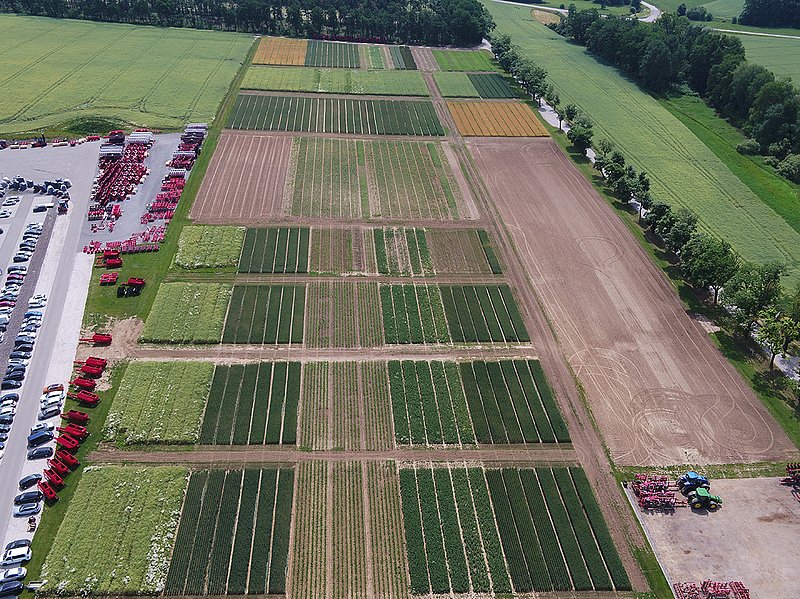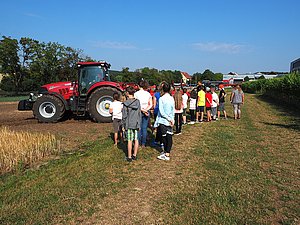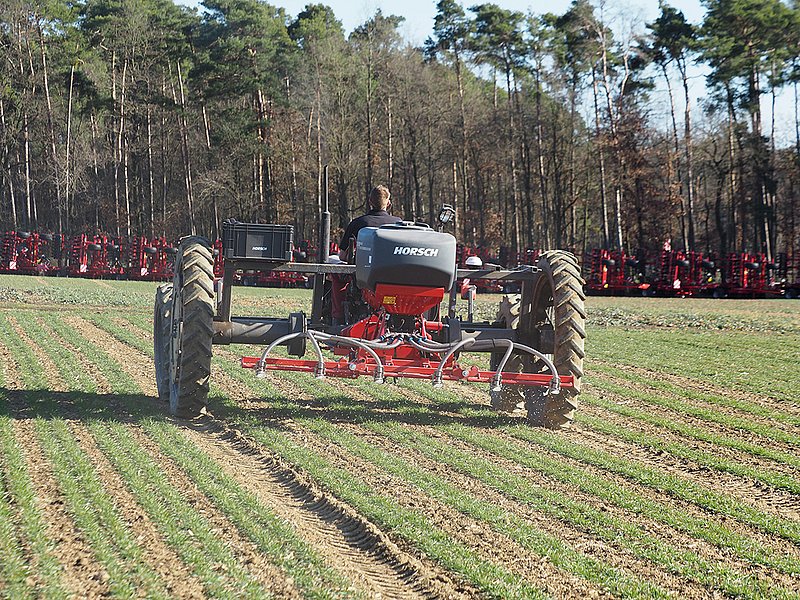More than just a test field
HORSCH demo garden
When you drive along the alley towards Sitzenhof, you can see the HORSCH demo garden at the right side. Originally it was established to carry out cultivation tests. But in the meantime, it is also used to get in touch with society and convey a more profound knowledge about agriculture. terraHORSCH talked to Michael Braun and Josef Stangl from the HORSCH product marketing.

terraHORSCH: When did HORSCH establish the demo garden and what was the idea behind it?
Michael Braun: The demo garden was established in 1997. The basic idea at that time was to show that no-till farming could successfully be put into practice at the site. However, we quite soon learned that it worked but only with restrictions. For tillage can indeed have yield-increasing and yield-securing effects. Today, the demo garden has other tasks, too. A really important one is the external communication. This means that with the demo garden we have the opportunity to get in contact with people and to start discussing – with farmers, non-specialists and particularly pupils.
So the purpose of the demo garden has shifted?
Josef Stangl: In a sense, yes. The demo garden still is used for cultivation tests, but the scope has broadened. In addition to the numerous groups of visitors that visit the HORSCH premises, we also carry out some projects with local schools. And depending on who you talk to in the demo garden you can use a different language. For pupils it quite basically is about showing them the crops in the field so that they get a feeling that this is what will be processed and turned into the food they eat every day. When farmers visit the demo garden the topics are completely different. They for example focus on the correct population management, seed rates or alternative rotations.
What do the pupils and non-specialists think about the demo garden?
Josef Stangl: It provides the pupils with the opportunity to walk right into the population, to touch the plants and to smell them. It is a great experience for them that the lessons take place outside in the field and that they can learn with all their senses.
Michael Braun: With non-specialist adults it always is exciting as we can show them things on a small scale that often are discussed by society, e.g. no-till farming or tillage, plough versus ploughless. A lot of effects can be shown directly in the field in a considerably more impressive way, e.g. soil structure and the consequences of different cultivation intensities.

What about the more uncommon crops in the demo garden? Why do you cultivate them?
Josef Stangl: Because of the climate change we question and test a lot of things. We always move on the thin line between what can be put into practice and makes sense for the farmer and what is just playing around. It is our objective to also test crops that virtually could get directly from the field onto the plate, like for example chickpeas, edamame, popcorn maize or sugar maize. Another reason is to test how these crops can be included in the rotation. In the future, it will get more and more risky to use intensive and tight rotations. This is why we look into alternatives.
How do the visitors react to those special crops?
Josef Stangl: The pupils are especially thrilled by the popcorn maize. The children think it’s brilliant! The more unusual a crop is, the more interested they are.
Michael Braun: In my opinion, two aspects are very important with regard to the cultivation of these special crops: First, we can show the visitors what can be cultivated in our region beside the traditional crops and second, we as a company learn quite a lot. We ourselves cannot yet assess what the final result of the cultivation tests will be. It is a constant learning process to test if what we do makes sense and is useful. Therefore, it also is one of the tasks of the demo garden to test diversity as well as to teach ourselves certain things and to learn from them. We are still far from being experts for these crops and we first of all have to create a knowledge base.

What grows in the demo garden?
A summary of this year’s cultivation tests in the demo garden
Maize, wheat, rape: The traditional crops still play an important role in the demo garden. The tests mainly are about detecting production-related subtleties.
Catch crops: Various catch crops and catch crops mixtures are cultivated in the demo garden to examine the influence on the following crop. Different catch crops are tested to gather experiences and find out which additional value they have for the following plant.
Soya and edamame: The trend more and more goes towards the production of domestic protein. HORSCH thinks that in some years, soya will be established in Germany and that the number of site-specific varieties will increase in the future. Moreover, soya is easy to hoe and is ideal as a previous crop for cereals.
Chickpeas: So far, there only is few information about the cultivation of chickpeas in Germany. Moreover, there are just a few available varieties. Chickpeas are mainly grown in Southern countries or dry regions.
Sunflowers, sugar maize and popcorn maize: Similar to the chickpeas the idea for these crops is to have a short way from the field to the plate.
Hemp: At the moment, the demand for hemp in Germany is increasing so rapidly that it cannot be covered. Hemp is an excellent example for the fact that uncommon crops are quite popular in our society.
Less than 1/3 of the plots in the demo garden are used for cultivating the special crops.